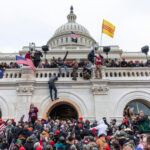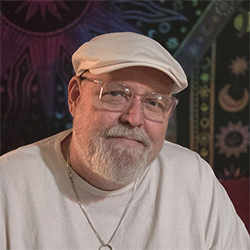
Florida Man Faces New Charges After Previous Presidential Pardon: What’s Next?
January 24, 2025
JoJo tells the truth or suffers the wrath of THE LAST DAB 🥵
January 25, 2025L.A. Bus Tours: A New Chapter in Disaster Tourism
In the aftermath of the recent wildfires that ravaged parts of Los Angeles, a unique opportunity has emerged to not only bring the city’s tourism industry back to life but also to provide a way to support victims of the disaster. For years, Los Angeles has been home to a popular tourist attraction: celebrity home bus tours. These tours would typically take visitors through neighborhoods like Beverly Hills, Bel Air, and Malibu, showing off the luxurious homes of the rich and famous. However, with the fires leaving significant damage in their wake, a new, and somewhat unconventional, type of tour can begin to emerge. One that showcases the aftermath of the destruction, we’ll call it disaster bus tours.
This type of disaster tourism, particularly focused on the burned homes of the rich and famous, could serve as a way to help both the tourism industry and the victims of the fire recover. Though it may sound morbid, disaster tourism has been an effective strategy in the past for raising funds for those affected by natural disasters, providing income for struggling businesses, and getting displaced workers back to their jobs. To this day, tourists still visit the destruction left behind of Mount Saint Helen and places of death from the Revolutionary and Civil Wars. This new iteration of the celebrity home bus tour offers a potential win-win solution for everyone involved.
Many businesses within the tourism sector have been severely affected by the wildfires, including the bus tour companies that have long made a living showing off the sprawling estates of Hollywood’s elite. These businesses, along with hotels, restaurants, and other service providers, have faced significant losses as tourists cancel trips and as resources are diverted to rebuilding efforts. By reimagining the bus tours to focus on the areas that were hardest hit by the fires, particularly homes that once belonged to celebrities, the tourism industry could generate new interest, creating a fresh narrative around the tragedy.
Proceeds from these tours could be directed toward local fire relief efforts, directly aiding the rebuilding process and helping those who lost homes and possessions. This is especially poignant in communities where insurance payouts are often slow or insufficient to cover the full cost of rebuilding. By drawing attention to the devastation through a tour that’s both educational and philanthropic, the city could help funnel much-needed resources into the hands of the people who need them most.
In addition to supporting fire victims, this new form of disaster tourism would help bring businesses back on their feet. Many people in Los Angeles rely on tourism for their livelihoods, and the recent fires have left them without income and facing uncertain futures. By incorporating disaster tourism into their offerings, bus companies and other local businesses could begin generating income once more. Tour operators, drivers, and hospitality workers, who have all faced layoffs or reduced hours, could return to work, which would also contribute to the local economy.
Tourism companies that typically focus on sightseeing and celebrity tours could diversify their offerings to include both traditional tours and new, fire-focused routes. For example, a tour could begin with a typical look at celebrity homes and then transition into a visit to neighborhoods where the fires have caused severe destruction. Visitors could learn about the local response, the challenges of fire management, and the resilience of the community. This educational angle could help make the tour both engaging and meaningful for guests, fostering empathy and support for the city’s recovery.
Of course, the idea of showcasing disaster-stricken areas for entertainment or educational purposes is not without ethical concerns. Tour companies need to approach these new tours with sensitivity, ensuring that they do not trivialize the suffering of those affected. Instead of focusing on voyeurism, the tours should highlight stories of survival, community solidarity, and the ongoing efforts to rebuild. By offering visitors an opportunity to contribute to relief efforts directly through their ticket sales, companies could provide a service that benefits both the economy and those who have been displaced.
As Los Angeles works to recover from the fires, the revival of bus tours, this time focusing on the devastation caused by the fires, could play an important role in both supporting the tourism industry and assisting those who have lost everything. With a thoughtful approach, this model of disaster tourism could be a force for good, allowing people from around the world to contribute to the recovery while still enjoying the sights of this vibrant and resilient city.
C. Rich
CRich@AmericaSpeaksInk.com

C. Rich is the voice behind America Speaks Ink, home to the America First Movement. As an author, poet, freelance ghostwriter, and blogger, C. Rich brings a “baked-in” perspective shaped by growing up on the streets and beaches of South Florida in the 1970s-1980s and brings a quintessential Generation-X point of view.
Rich’s writing journey began in 2008 with coverage of the Casey Anthony trial and has since evolved into a wide-ranging exploration of politics, culture, and the issues that define our times. Follow C. Rich’s writing odyssey here at America Speaks Ink and on Amazon with a multi-book series on Donald Trump called “Trump Era: The MAGA Files” and many other books and subjects C. Rich is known to cover.
“America Speaks Ink is a Google News approved source for Opinion”





